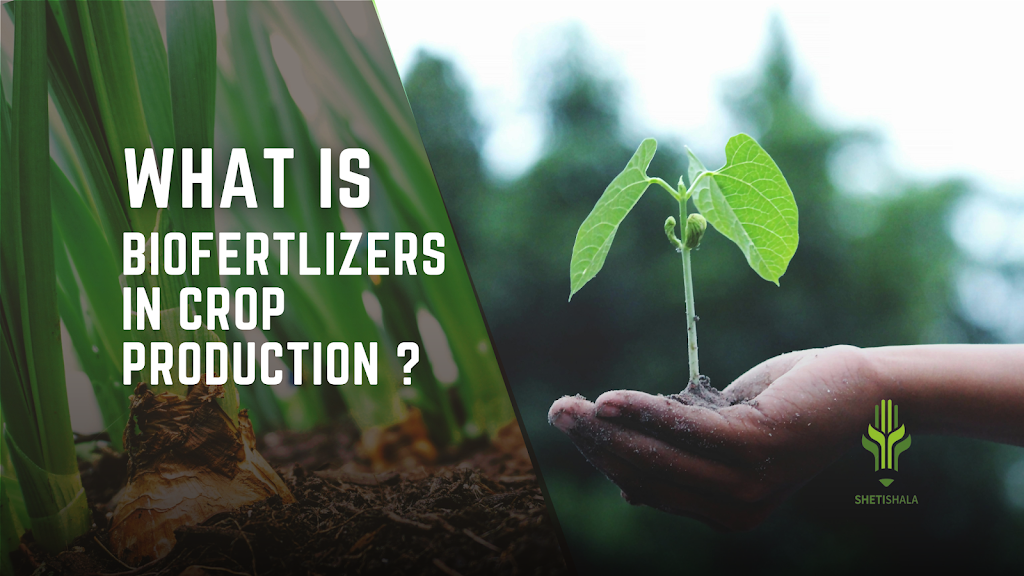Introduction
Evolving landscape of the agriculture industry in our insightful blog. Delve into the latest advancements, including integrated pest management, farm management software, and market access and trade policies that are shaping modern agriculture. Discover the opportunities for growth in agro-processing and food manufacturing, and how these innovations are transforming farming practices worldwide. This blog written by Shamal Tathe provides a comprehensive overview of the dynamic changes in the agriculture industry, offering valuable insights into the trends and technologies driving sustainable growth and efficiency in the sector.
The agriculture industry, a cornerstone of human civilization, has undergone significant transformations
throughout history. From the early days of subsistence farming to the technologically advanced practices
of today, agriculture has continuously evolved to meet the growing demands of a burgeoning global
population. In this blog, we will explore the current trends, challenges, and opportunities for growth in
the agriculture industry, providing a comprehensive overview of its dynamic landscape.
Trends Shaping Modern Agriculture –
1. Technological Advancements
Technology is revolutionizing agriculture, enhancing productivity, efficiency, and sustainability. Key
technological advancements include:
**Precision Farming**:
Utilizing GPS, IoT devices, and data analytics, precision farming enables farmers to optimize field-level
management regarding crop farming. Techniques such as variable rate technology (VRT) and remote
sensing allow for precise application of inputs like fertilizers and pesticides, reducing waste and
environmental impact.
**Automation and Robotics**:
– From autonomous tractors to robotic harvesters, automation is streamlining labor-intensive
processes. These innovations not only address labor shortages but also increase efficiency and
consistency in farming operations.
**Biotechnology**:
Genetic engineering and CRISPR technology are leading to the development of crops with improved
yield, pest resistance, and climate adaptability. These advancements hold the promise of enhancing food
security and reducing the need for chemical inputs.
2. Sustainable Agriculture Practices
Sustainability is a crucial focus in modern agriculture. With growing concerns about climate change and
environmental degradation, farmers are adopting practices that promote long-term ecological balance.
Key sustainable practices include:
**Organic Farming**:
Emphasizing the use of natural inputs and biological processes, organic farming aims to reduce
chemical residues in food and minimize environmental impact. This approach is gaining popularity
among consumers seeking healthier and more eco-friendly food options.
**Regenerative Agriculture**:
This holistic approach focuses on improving soil health, Bio-diversity, and water management.
Techniques like cover cropping, no-till farming, and agro-forestry are employed to enhance soil fertility,
sequester carbon, and increase farm resilience.

**Integrated Pest Management (IPM)**:
IPM combines biological, cultural, and chemical methods to manage pests in an environmentally and
economically sustainable manner. By reducing reliance on synthetic pesticides, IPM promotes
biodiversity and reduces the risk of pest resistance.

3. Digital Agriculture
The digital revolution is transforming agriculture through the integration of data and analytics. Key
aspects of digital agriculture include:
**Farm Management Software**:
These platforms provide farmers with real-time data on weather, soil conditions, crop health, and
market prices. By leveraging this information, farmers can make informed decisions, optimize
resource use, and improve overall farm productivity.

**Blockchain Technology**:
Blockchain is enhancing transparency and traceability in the agricultural supply chain. It
allows for secure and immutable record-keeping, ensuring the authenticity of products and
reducing fraud.
**E-commerce and Market Access**-
The rise of digital marketplaces is providing farmers with direct access to consumers, reducing the
need for intermediaries. This trend is particularly beneficial for smallholder farmers, enabling them
to receive fair prices for their produce.
Challenges Facing the Agriculture Industry
1. Climate Change and Environmental Impact
Climate change poses a significant threat to agriculture, affecting crop yields, water availability, and pest
dynamics. Extreme weather events, such as droughts, floods, and heatwaves, are becoming more
frequent and severe, disrupting farming operations. Additionally, agriculture itself contributes to
climate change through greenhouse gas emissions, deforestation, and soil degradation.
Addressing these challenges requires a multifaceted approach, including:
**Adaptation Strategies**:
– Developing and promoting climate-resilient crop varieties, improving water management
practices, and implementing early warning systems for extreme weather events.
**Mitigation Efforts**:
Reducing greenhouse gas emissions through sustainable farming practices, reforestation, and carbon
sequestration. Transitioning to renewable energy sources and improving energy efficiency on farms.
2. Resource Scarcity
The agriculture industry is heavily reliant on natural resources such as water, soil, and biodiversity.
However, these resources are becoming increasingly scarce due to overexploitation, pollution, and
climate change. Key issues include:
**Water Scarcity**:
Agriculture accounts for approximately 70% of global freshwater use. Efficient irrigation techniques,
rainwater harvesting, and water recycling are essential to address water scarcity and ensure
sustainable agricultural practices.
**Soil Degradation**:
Intensive farming practices, deforestation, and erosion contribute to soil degradation, reducing its
fertility and productivity. Implementing soil conservation practices, such as cover cropping and
agroforestry, is crucial to maintaining healthy soils.
**Biodiversity Loss**:
Monocropping and habitat destruction threaten biodiversity, impacting ecosystem services and
agricultural resilience. Promoting agrobiodiversity and preserving natural habitats are vital for
sustainable agriculture.
3. Labor Shortages
The agriculture industry faces significant labor shortages, particularly in developed countries. Factors
such as an aging workforce, urban migration, and changing labor preferences contribute to this
challenge. Automation and mechanization offer potential solutions, but there are concerns about the
displacement of human workers and the need for reskilling.
4. Market Volatility and Price Fluctuations
Agricultural markets are inherently volatile, influenced by factors such as weather conditions,
geopolitical events, and supply-demand dynamics. Price fluctuations can have a significant impact on
farmers’ incomes and food security. Strategies to mitigate market volatility include:
**Crop Diversification**:
Diversifying crops reduces dependency on a single commodity and spreads risk. Farmers can
explore value-added products and niche markets to enhance income stability.
*Market Access and Trade Policies**:
Ensuring fair trade practices, reducing trade barriers, and improving market infrastructure can enhance
farmers’ access to markets and reduce price volatility

Opportunities for Growth in the Agriculture Industry

1. Innovation and Technology Adoption
The adoption of innovative technologies presents significant growth opportunities for the agriculture
industry.
Key areas of innovation include:
**AgriTech Startups**:
The rise of AgriTech startups is driving innovation in areas such as precision farming, automation, and
digital agriculture. These startups are developing solutions to address specific challenges faced by
farmers and improve overall efficiency.
**Research and Development**:
Continued investment in agricultural research and development is crucial to drive innovation. Public private partnerships, collaboration with academic institutions, and government support can accelerate the development and adoption of new technologies.
**Data Analytics and Artificial Intelligence**:
Leveraging data analytics and AI can enhance decision-making, optimize resource use, and improve
crop yields. Predictive analytics, machine learning, and remote sensing technologies offer valuable
insights for farmers.
2. Sustainable and Regenerative Practices
The growing demand for sustainable and ethically produced food presents opportunities for farmers to
adopt regenerative practices. Consumers are increasingly seeking products that are environmentally
friendly, socially responsible, and aligned with their values. Key opportunities include:
**Organic and Regenerative Certifications**:
Obtaining certifications for organic and regenerative practices can enhance market access and command
premium prices. Certification programs provide consumers with assurance regarding the sustainability
and quality of products.
**Carbon Markets and Ecosystem Services**:
Participating in carbon markets and ecosystem service programs can provide additional income streams
for farmers. Practices such as agroforestry, cover cropping, and soil carbon sequestration can generate
carbon credits and contribute to climate mitigation.
3. Diversification and Value Addition
Diversifying farm enterprises and adding value to agricultural products can enhance profitability and
resilience. Key opportunities include:
**Agro-processing and Food Manufacturing**:
Investing in agro-processing facilities and food manufacturing can create value-added products with
higher market potential. Processing raw agricultural produce into packaged foods, beverages, and other
products can increase profitability and reduce post-harvest losse.

**Agri-tourism and Direct Marketing**:
Diversifying income streams through agri-tourism and direct marketing can provide
additional revenue sources. Farmers can offer farm tours, farm stays, and farm-to-table
experiences, attracting tourists and consumers interested in local and sustainable food.

4. Education and Capacity Building
Investing in education and capacity building is essential to empower farmers and
agricultural professionals with the knowledge and skills needed for sustainable and
profitable farming.
Key areas of focus include:
**Extension Services and Training Programs**:
Providing access to extension services, training programs, and technical assistance can
enhance farmers’ knowledge and skills. These programs can cover topics such as
sustainable farming practices, technology adoption, and market access.
**Youth Engagement and Entrepreneurship**:
Encouraging youth participation in agriculture and promoting entrepreneurship can drive
innovation and ensure the industry’s future viability.
Initiatives that provide mentorship, financial support, and networking opportunities for
young farmers can foster a new generation of agricultural leaders.
Conclusion
The agriculture industry is at a pivotal moment, facing both significant challenges and
unprecedented opportunities for growth. Technological advancements, sustainable
practices, and digital agriculture are reshaping the landscape, offering solutions to address
resource scarcity, climate change, and market volatility. Embracing innovation, promoting
sustainable and regenerative practices, and investing in education and capacity building
are crucial steps towards a resilient and thriving agriculture industry. By navigating these
trends and challenges, farmers, policymakers, and stakeholders can unlock the full
potential of agriculture, ensuring food security and sustainability for future generation




